Our institution’s founders, led by Dr. William Matthews, built a school that would reject compromise and hold fast to Christ and Scripture.
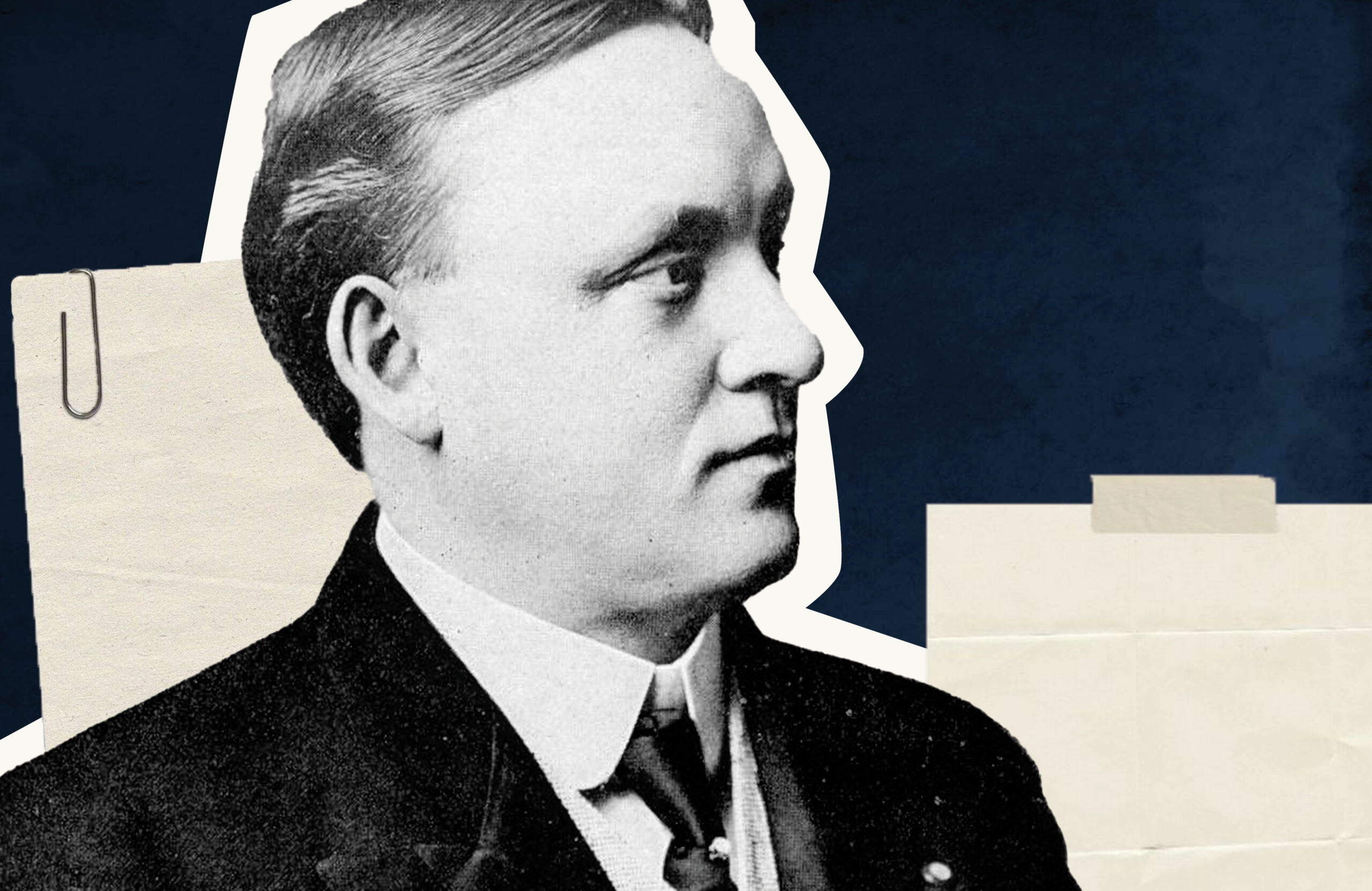
Editor’s note: The Master’s University (previously Los Angeles Baptist Theological Seminary, Los Angeles Baptist College, and The Master’s College) is nearing its 100th year. As we approach the milestone in 2027, this is the fourth in a series of stories about men and women used mightily by the Lord in our history.
It is no small thing to start a school. But the founders of Los Angeles Baptist Theological Seminary felt they had no other option.
These men — led by Dr. William Matthews, LABTS’s founding president — saw the church compromising in the face of modernism, and they answered the challenge by building a school that would hold fast to Christ and Scripture. In so doing, they indelibly shaped the heart and mission of what would become The Master’s University.
“Men of God travailed in soul for the birth of this Seminary,” records an LABTS bulletin published in May 1928. “It was conceived in prayer, born in faith, and dedicated to the conviction that God’s solid foundation stands unmoved.”
* * *
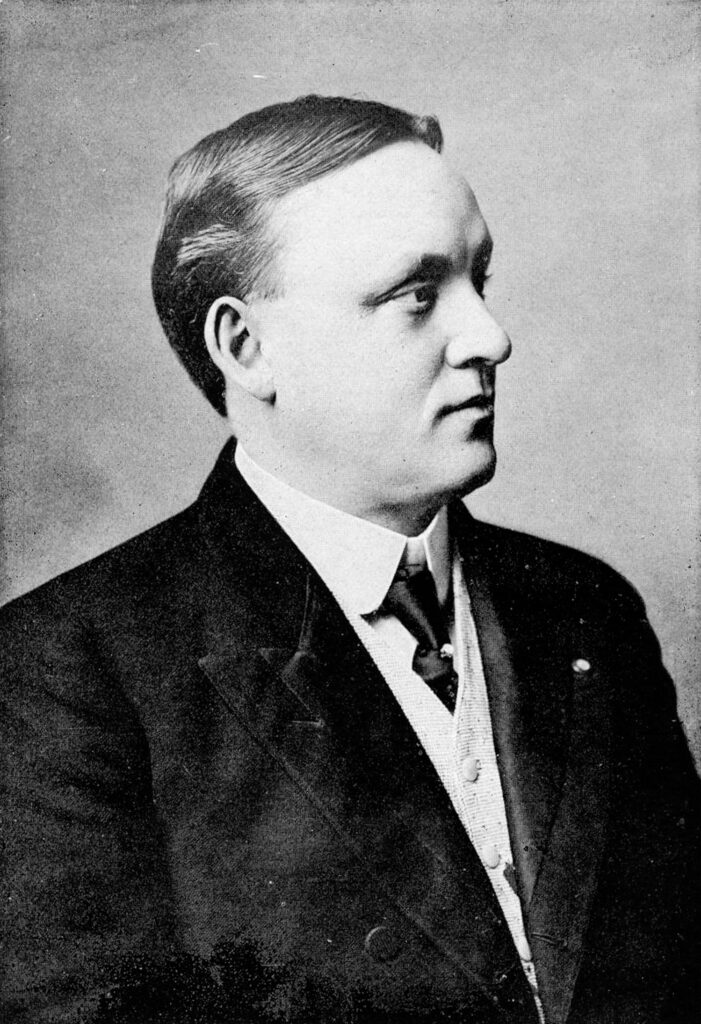
Dr. William A. Matthews, the first president of the institution that would later become The Master’s University.
In the early 20th century, biblically faithful American churches were faced with a growing crisis.
Major church denominations had, degree by degree, seen encroaching influences from modernism. By 1910, ideas like the fallibility of Scripture, evolution, and the social gospel had begun to gain a foothold, influencing the course of national conventions among the northern Baptist churches.
This deeply troubled those in the Northern Baptist Convention who were committed to upholding Scripture. The divide between them and the modernists deepened in the 1920s, ultimately leading a number of congregations to withdraw from the convention.
But there was still one problem: If churches couldn’t trust the convention to hold fast to biblical convictions, could they trust it to train their future pastors? It was convention-affiliated colleges and seminaries that trained bright-eyed Baptists looking to enter pastoral ministry, and in many cases, these institutions were perceived to be the leading influencers in the slant toward modernism.
In his written history of the first 50 years of what became LABC, Dr. Carl Sweazy records, “For some time leading Baptist colleges and seminaries had been undergoing subtle but definite changes in philosophy, involving a de-emphasis of some important Bible and Baptist doctrines such as the divine inerrancy of the Bible as the verbally and fully inspired Word of God, the essential unique deity and saviorhood of Jesus Christ, the absolute necessity of the new birth and associated truths.”
As dissenting churches broke from the Northern Baptist Convention, they began to form new associations of conservative, biblically faithful Baptist congregations. But if they were going to have a future, they needed a way to educate the next generation.
And this was exactly the need that one Los Angeles pastor saw.
Sweazy writes, “In the history of the Christian Church from apostolic days until the present, apostasy and dangerous heresies have always produced men of daring and courage and thrust them into positions of leadership in contention for the faith. It was so in Paul’s day as in the days of Athanasius, Martin Luther, John and Charles Wesley. A like circumstance brought to the fore Dr. William A. Matthews.”
* * *
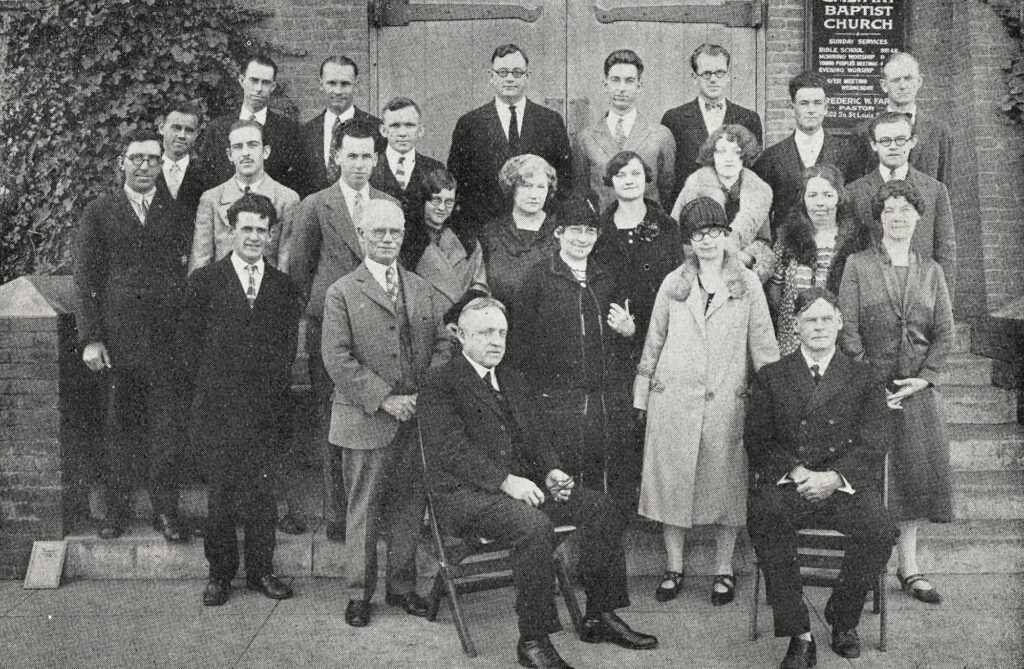
The faculty and first enrollment of students at Los Angeles Baptist Theological Seminary in October 1927. The school first met at Calvary Baptist Church in Los Angeles.
Born in England in 1868, Matthews immigrated to America with his parents in the 1880s. First licensed to preach at age 20, he went on to attend Morgan Park Theological Seminary of Chicago, Shurtleff and Ewing Colleges in Illinois, and the University of Chicago Divinity School.
He spent his life as a pastor, serving for the first couple decades of adulthood at churches in Illinois and Missouri. In 1911, however, he was presented with a very different sort of opportunity: He was asked to become a college president.
Ewing College — a small Christian college in Ewing, Illinois — where Matthews earned a B.A. and an M.A., and which later honored him with a Doctor of Divinity, saw its president resign amid controversy. Matthews went from serving on the college’s board to becoming its fifth president. However, Ewing’s problems ran deep, and continued upheaval caused Matthews to leave in 1912.
This experience — serving as president at a college that, according to the book, “History of Ewing College,” “was built around the Bible” — helped prepare him for what would come later.
In the early 1920s, Matthews moved to Southern California, ultimately landing at Memorial Baptist Church in Los Angeles.
Staunchly faithful to what were then commonly called “the fundamentals” of biblical truth, he connected with other conservative pastors in the city. In the Northern Baptist controversy over modernism, Matthews and his church stood on the side of the dissidents.
“Dr. Matthews was a man of deep spiritual motivation, strong convictions, course and aggressiveness,” Sweazy writes. “One was always impressed by his purpose, determination and drive.”
But for Matthews, it wasn’t enough to reject compromised institutions. He wanted to help build something new in their place.
“It was during this period of fundamental reconstruction that certain godly pastors of the Los Angeles area anticipated a coming leadership crisis,” Sweazy writes. He goes on, “Without doubt the moving spirit and leader of the small company of dedicated pastors and laymen who founded this school was Dr. William A. Matthews.”
The LABTS bulletin published in May 1928 records the story of how this happened. In the winter of 1926-27, Matthews met with Dr. Benjamin Fellman, pastor of a church in Pasadena, “to pray and talk over the need of establishing in Los Angeles a Baptist Theological Seminary on an Orthodox Baptist basis.
“After a careful survey of the field, both pastors became convinced that the hour had come to challenge themselves and all Orthodox Baptists on the Pacific Coast to begin to establish such a Theological Seminary.”
They were soon joined in their efforts by Drs. Frederick Farr and G. Rector Dye, pastors in Los Angeles and San Bernardino, respectively. This core group of pastors, together with other faithful Baptists in the state, “came to unanimous agreement that it was the Will of God that preliminary steps should be taken to establish the Seminary.”
Matthews quickly went to work with an attorney to submit the needed paperwork. And on May 17, 1927, Los Angeles Baptist Theological Seminary was officially organized.
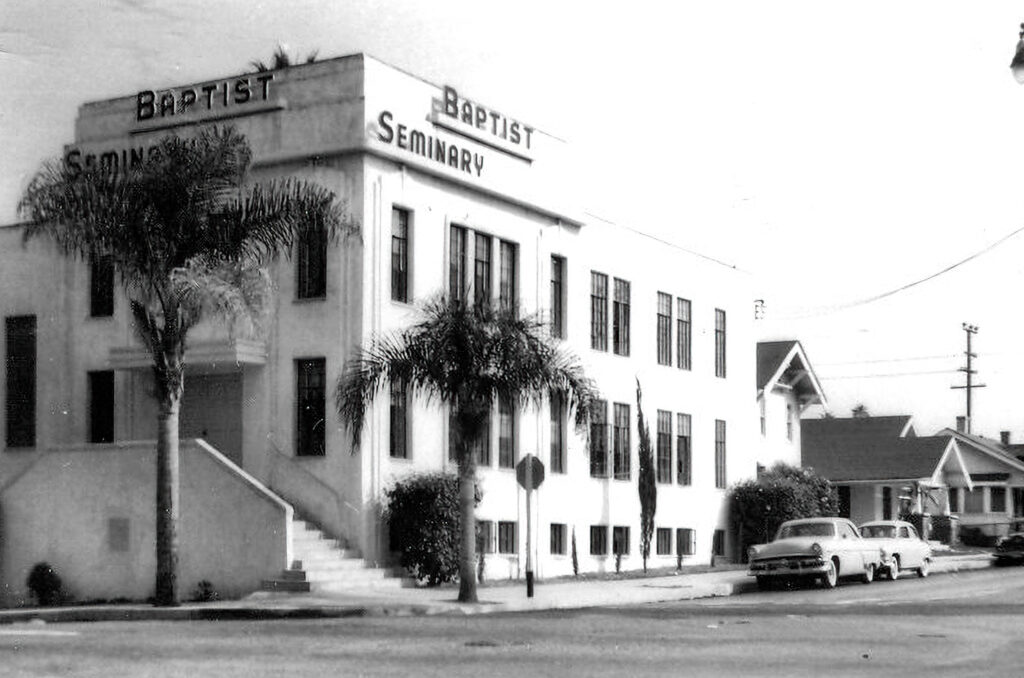
In 1942, LABTS relocated to the corner of Sixth and St. Louis streets in Boyle Heights, California.
Calvary Baptist Church at 206 South St. Louis Street in Los Angeles invited LABTS to hold classes in its building. Hundreds of Baptists gathered there on Sept. 30 to celebrate the school’s opening. During its first year, LABTS welcomed a total of 38 students.
LABTS’s May 1929 bulletin records founding policies that will sound familiar to alumni of any decade: “The constitution and by-laws forever forbid and exclude the teaching of Evolution and require that each teacher, once a year, shall publicly avow his loyalty to the Doctrinal Statement of the Seminary.”
Matthews served LABTS as its president, as well as its professor of expository preaching. Farr taught systematic theology, Fellman taught courses on prayer, and Dye taught missions and church history. These men were also joined by experts in Greek and Hebrew (Henry Roberts) and medical missions (George Boyd).
Sweazy writes, “It must be kept in mind that this school began as a theological seminary for the definite purpose of training ministers, missionaries and Christian workers for a fundamental, uncompromising ministry, separate from all traces of apostasy. It was fully dedicated to a divinely-inspired Bible and complete loyalty to Jesus Christ as presented in the Scriptures of both the Old and New testaments.”
Those involved with LABTS were fully dedicated to that end, donating many hours of their time in order to teach students and keep the school operating. To stay afloat, the school relied on donations from those who believed in the value of its mission.
The May 1928 bulletin states, “The Seminary has no endowment, no income from tuition, and no rich men to underwrite its obligations. The Lord alone is our Banker. We believe the Seminary will not want.”
And indeed, week by week, the Lord provided. Christian families in the city opened their homes to board students. Jobs turned up in the city, allowing Matthews to connect students with opportunities to work their way through school. As they were able, friends of the seminary forgave loans, gifted property, and wrote checks.
At the close of LABTS’s inaugural year, Matthews wrote a short piece reflecting on what had been accomplished. He expressed gratitude for the school’s robust spiritual atmosphere, marked by daily prayer meetings and a zeal for Scripture and evangelism.
Wrote Matthews, “In a time like this when many Seminaries make light of Evangelization, deny the authority of God’s Word, exalt reason and science above Revelation, deify the intellectual and dethrone the spiritual, making shipwreck of the faith and career of students and Pastors alike, it is inspiring to God’s true children to know that this Seminary is come to the Kingdom for such a time as this.”
* * *

This page highlights LABTS’s graduating class of 1932.
With the establishment of LABTS, the biblically faithful Baptist churches of California finally had a seminary to train their future ministers. But in Matthews’ mind, that only solved half of the problem.
In a piece published on May 22, 1930, Matthews presented a question: Did the existing denominational colleges provide a worthy education for undergraduate students?
Matthews was aware of two anecdotes that particularly troubled him. He wrote, “A (Baptist) University president announces that his school will aim ‘to unsettle the faith of its students!’
“An undergraduate told us how his college course ‘unsettled’ him. He entered a Christian. In his Freshman year he accepted Evolution; in Sophomore, Atheism; in Junior, he became president of an Atheistic Society. He is now a Senior! Conclusion: An Anti-Christian spirit pervades many Denominational Colleges today.”
Matthews went on: “(Prospective college students) and their parents pray for a way of escape from this peril. Shall they pray in vain? Must they enter such colleges? God forbid.”
With a platform already laid in the form of LABTS’s seminary education, Matthews desired to be part of the solution. So, in the fall of 1930, LABTS began offering a four-year bachelor of arts degree, combining traditional liberal arts subjects with the school’s existing biblical studies curriculum.
The school continued to call itself Los Angeles Baptist Theological Seminary for many years — but when it changed its name to Los Angeles Baptist College and Seminary in 1957, it was simply a coming to fruition of the school’s pivotal decision decades earlier.
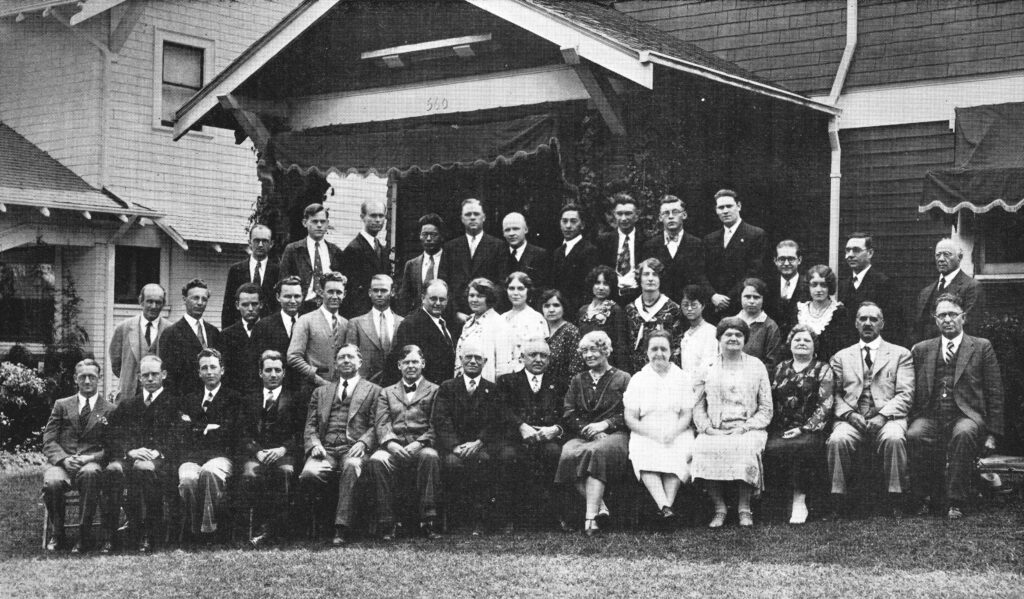
The students and faculty of LABTS during the 1931-32 school year.
Matthews, however, did not live to see that moment. He passed away on August 18, 1943, having guided the school he founded through the first 16 years of its existence. He served for 12 of those years without pay, and he left his library of several thousand volumes to the school.
In those first 16 years, LABTS granted divinity degrees to prominent leaders such as Thomas Horton (founder of Biola University), Charles Fuller (founder of Fuller Theological Seminary), John Rice (founding editor of “The Sword of the Lord”), Robert Ketcham (founder of the General Association of Regular Baptists), and Louis Entzminger (leader of the modern Sunday school movement).
They, and all graduates of LABTS, LABC, TMC, and TMU, owe a debt of gratitude to the men who undertook to found a school faithful to educate “for Christ and Scripture.”
But according to Matthews, the story of LABTS has a much higher hero. In his “Ten Wonderful Years” brochure, published in March 1937, he wrote the following:
“Boasting in ourselves or in one another is excluded. The purpose and design of this story is not to glorify the living nor to commemorate the dead. Indeed, the sole aim has been to make the story a commemoration, not of human personalities, but of Divine Providences. ‘Not unto us, O Lord, not unto us but unto Thy Name give glory and for Thy truth’s sake!’”
Master’s Connect is the alumni platform for graduates of LABC, TMC, and TMU. Meet other alumni, receive mentorship, view job listings, and more.

The Master’s University and Seminary admit students of any race, color, national and ethnic origin to all the rights, privileges, programs, and activities generally accorded or made available to students at the school. It does not discriminate on the basis of race, color, national and ethnic origin in the administration of its educational policies, admissions policies, scholarship and loan programs, and athletic and other school-administered programs.
21726 Placerita Canyon Road
Santa Clarita, CA 91321
1-800-568-6248
© 2025 The Master’s University Privacy Policy Copyright Info
| Cookie | Duration | Description |
|---|---|---|
| cookielawinfo-checkbox-analytics | 11 months | This cookie is set by GDPR Cookie Consent plugin. The cookie is used to store the user consent for the cookies in the category "Analytics". |
| cookielawinfo-checkbox-functional | 11 months | The cookie is set by GDPR cookie consent to record the user consent for the cookies in the category "Functional". |
| cookielawinfo-checkbox-necessary | 11 months | This cookie is set by GDPR Cookie Consent plugin. The cookies is used to store the user consent for the cookies in the category "Necessary". |
| cookielawinfo-checkbox-others | 11 months | This cookie is set by GDPR Cookie Consent plugin. The cookie is used to store the user consent for the cookies in the category "Other. |
| cookielawinfo-checkbox-performance | 11 months | This cookie is set by GDPR Cookie Consent plugin. The cookie is used to store the user consent for the cookies in the category "Performance". |
| viewed_cookie_policy | 11 months | The cookie is set by the GDPR Cookie Consent plugin and is used to store whether or not user has consented to the use of cookies. It does not store any personal data. |